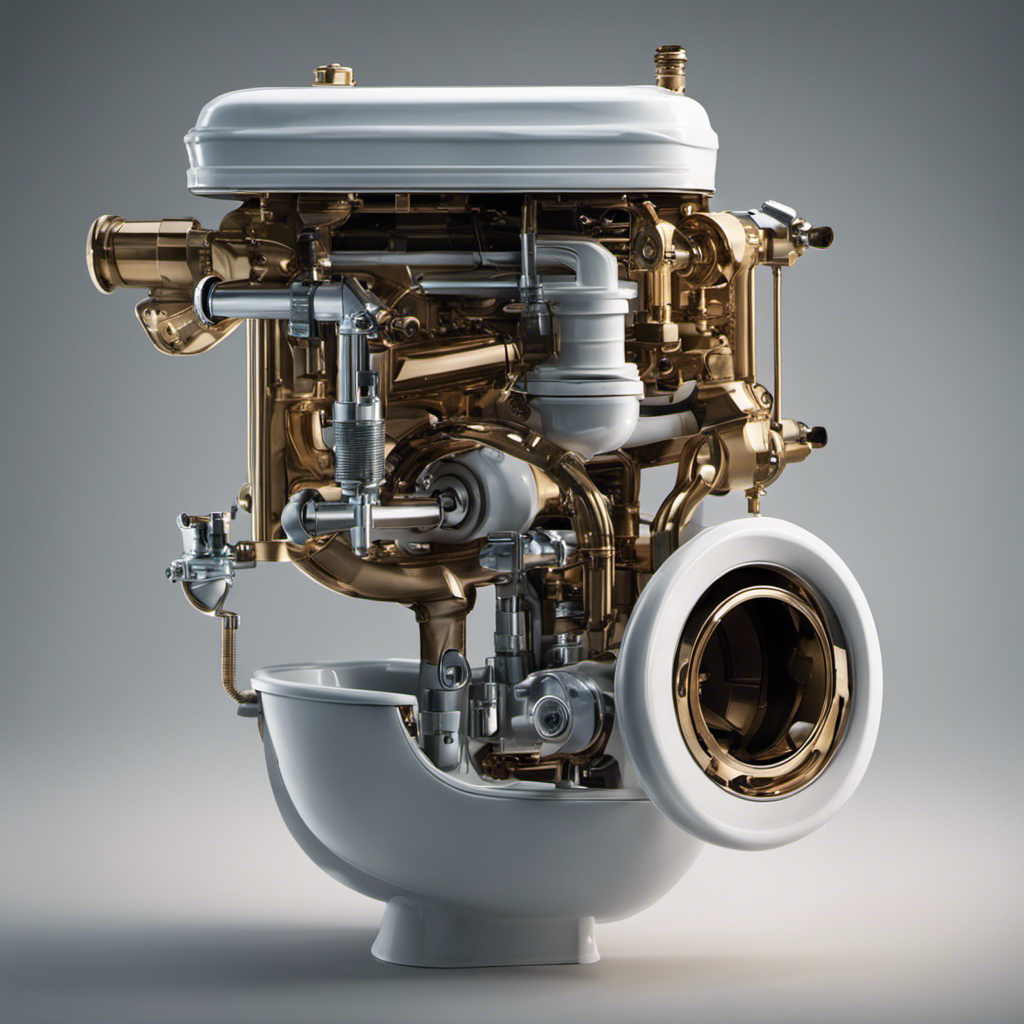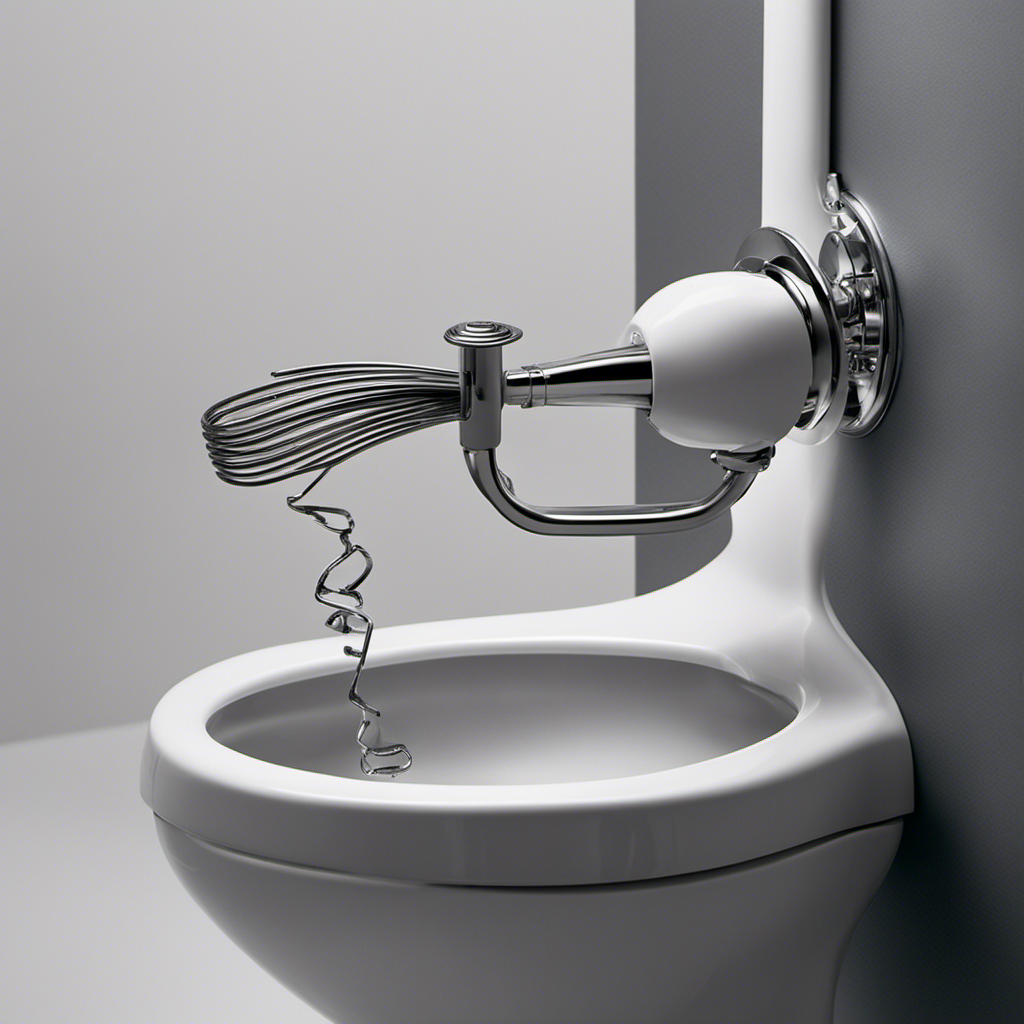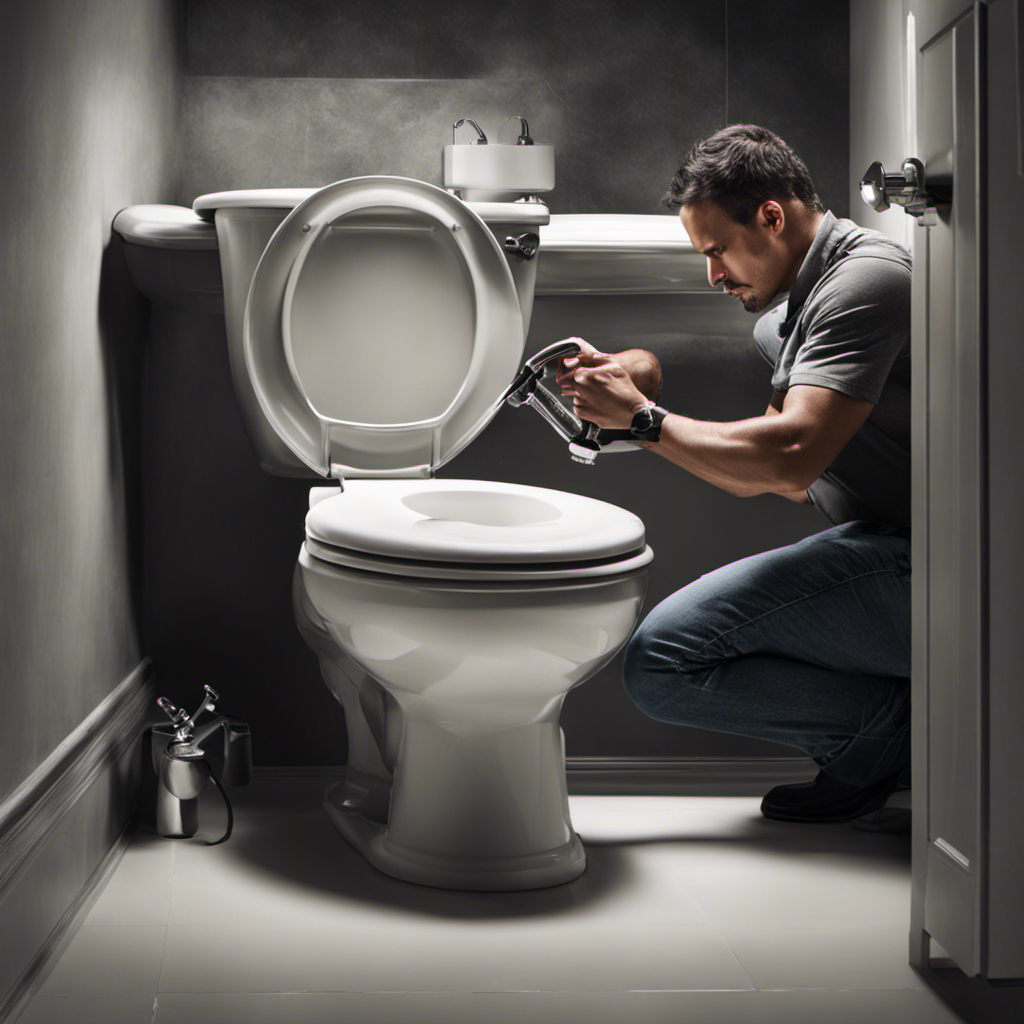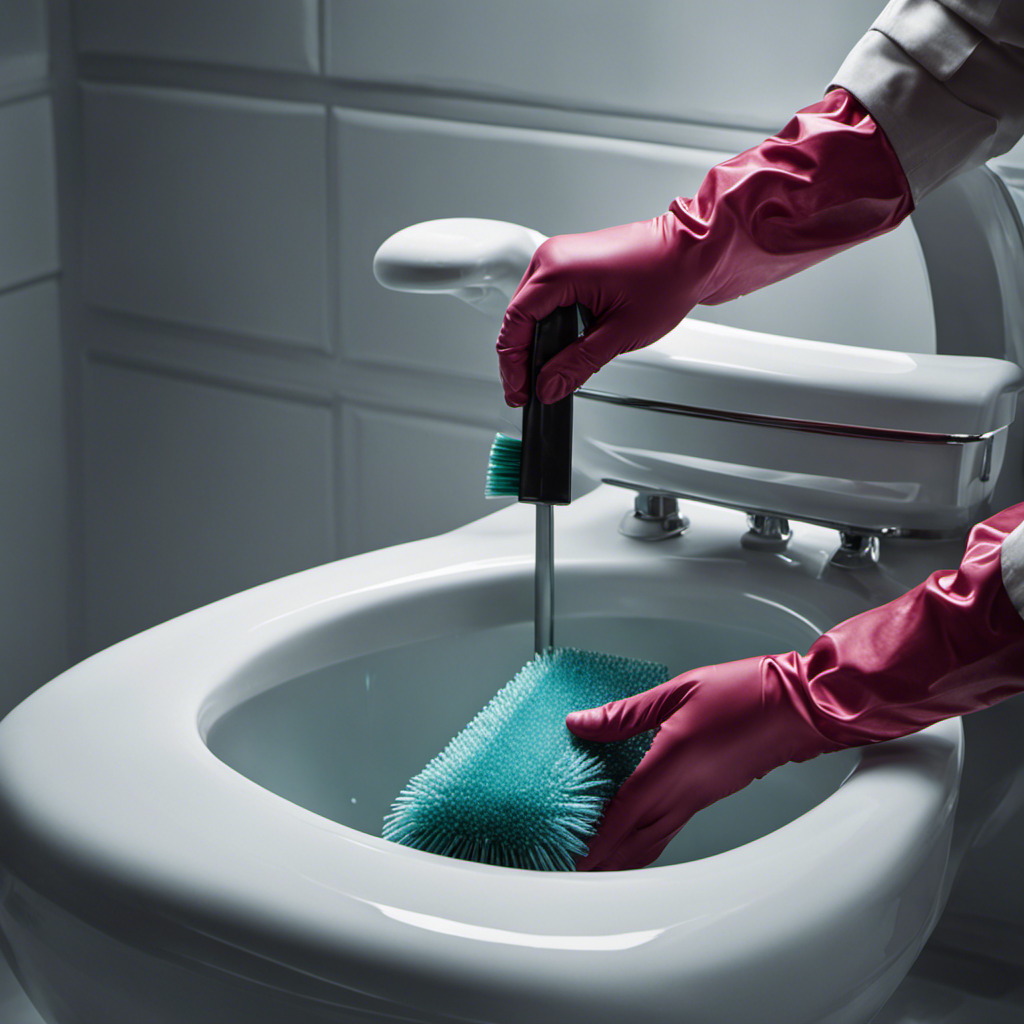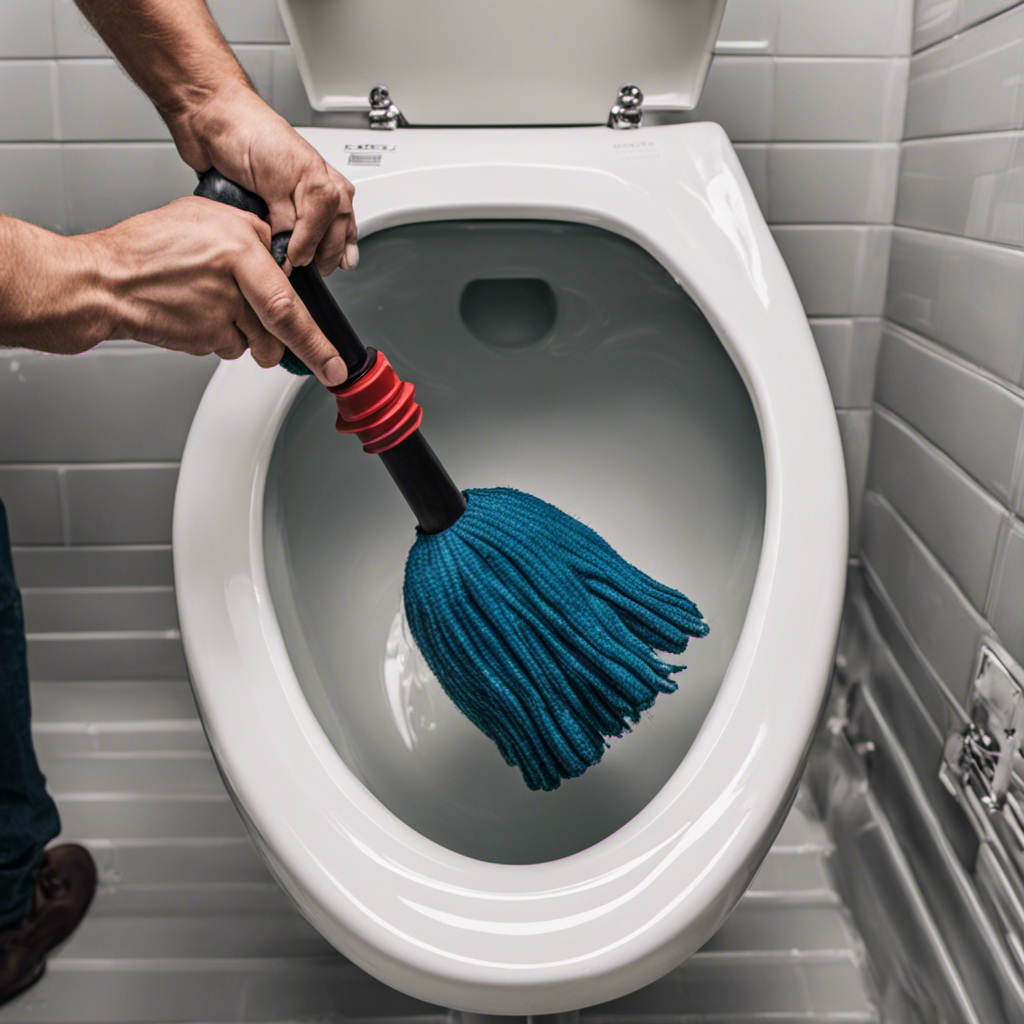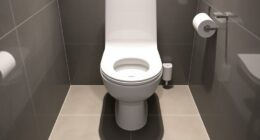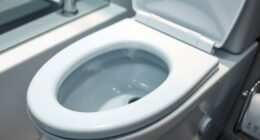Are you tired of the incessant gurgling and wasted water? Don’t fret, we’ve got you covered.
In this article, we’ll show you step-by-step how to fix your running toilet tank. From assessing the problem to reassembling and testing, we’ll guide you through the entire process.
With our clear instructions and handy tips, you’ll have your toilet back to normal in no time. So grab your tools and let’s get started!
Key Takeaways
- Check the flapper valve and float ball for any issues and clean or replace them if necessary.
- Inspect and clean the fill valve, and consider replacing it if there are visible signs of damage or wear.
- If cleaning and replacing parts doesn’t solve the problem, consult the toilet’s manual or seek professional help for further troubleshooting and potential replacement of faulty parts.
- Regularly inspect and clean the tank to prevent mineral deposits or grime buildup, and ensure proper functioning of the fill valve and float.
Assessing the Problem
To assess the problem with your running toilet tank, you’ll need to start by checking the flapper valve. The flapper valve is the part that controls the water flow from the tank to the bowl.
Begin by removing the tank lid and observing the water level inside. If the water level is too high, it could be causing the tank to continuously fill and overflow.
Next, check the water pressure by flushing the toilet and observing how forcefully the water flows into the bowl. If the water pressure seems low, it could be a sign of a larger plumbing issue.
Additionally, inspect the tank and surrounding areas for any signs of leaks. Look for water puddles, dampness, or water stains. This will help you identify any potential sources of the problem.
Once you have assessed the situation and identified any issues, you can proceed to the next step of shutting off the water supply.
Shutting Off the Water Supply
To successfully shut off the water supply to your toilet, you will need to locate the water shut-off valve. This valve is typically located on the wall behind the toilet or under the sink.
Once you have located the valve, simply turn it clockwise to shut off the water flow to your toilet.
Locate Water Shut-Off
The first step in fixing a running toilet tank is to find the water shut-off valve. This valve is usually located near the base of the toilet, on the wall or floor. Here are some important things to keep in mind while locating the shut-off valve:
- Look for a small handle or lever near the toilet.
- Check behind the toilet or under the sink if you can’t find it nearby.
- The valve may be hidden behind a panel or access door.
- It could be labeled with a sign or colored handle for easy identification.
- If you’re still having trouble, consult the user manual or contact a professional plumber for assistance.
Once you have located the water shut-off valve, you can proceed to the next step of turning off the water supply.
Turn off Water
Now, take a moment to locate the water shut-off valve and turn it off to stop the water flow. This is a crucial step in repairing leaks and adjusting water pressure in your toilet tank. By turning off the water, you prevent any further water damage and create a safe working environment. To help you visualize the process, here is a table that outlines the steps to locate and turn off the water shut-off valve:
| Step | Action | Description |
|---|---|---|
| 1 | Locate | Find the shut-off valve usually located near the base of the toilet or on the water supply line. |
| 2 | Turn | Use a wrench or your hand to turn the valve clockwise, shutting off the water supply to the tank. |
| 3 | Test | Verify that the water flow has stopped by flushing the toilet. |
| 4 | Confirm | Check for any residual water by inspecting the tank and surrounding area for leaks. |
Remember to always turn off the water before attempting any repairs or adjustments to the toilet tank.
Shutting off Valve
Locate the shut-off valve near the base of your toilet or on the water supply line, and turn it clockwise to shut off the water flow. This is an essential step in fixing a running toilet tank. Shutting off the valve will stop the water from continuously filling the tank and prevent any further damage.
Here are some key points to keep in mind:
- The shut-off valve is usually a small lever or knob.
- It is typically located near the floor, behind or beside the toilet.
- Turning the valve clockwise will close it, shutting off the water supply.
- Ensure that the valve is fully closed to avoid any water leakage.
- Regular valve maintenance is important to prevent future issues and ensure proper functioning.
If you’re experiencing problems with the shut-off valve, such as leaks or difficulty turning it off, it may be necessary to consider replacing the valve altogether. Valve maintenance is crucial for a smoothly running toilet tank.
Checking the Flapper Valve
To fix a running toilet tank, start by checking if the flapper valve is sealing properly. The flapper valve is an essential component of the toilet tank that controls the water flow into the bowl. Common problems with the flapper valve include wear and tear, misalignment, and buildup of mineral deposits.
To repair the flapper valve, first, turn off the water supply to the toilet by shutting off the valve located near the base of the tank. Then, remove the tank lid and inspect the flapper valve for any visible signs of damage or debris. Clean the valve and its seat, ensuring they are free from any obstructions.
If the flapper is damaged, replace it with a new one, making sure it fits properly. Finally, turn on the water supply and test if the flapper valve is now sealing correctly.
Adjusting the Float Ball
When it comes to properly adjusting the float ball in your toilet tank, there are a few key points to keep in mind.
First, ensure that the float ball is set at the correct height to control the water level in the tank.
Second, troubleshoot any issues with the float ball, such as it not shutting off the water flow or getting stuck in the up or down position.
Proper Float Ball Adjustment
Make sure you’re adjusting the float ball properly to fix your running toilet tank. Float ball maintenance is crucial for ensuring that your toilet tank functions correctly. Here’s a step-by-step guide to troubleshooting float issues:
-
Ensure the float ball is not touching the sides of the tank, as this can prevent it from rising and shutting off the water flow.
-
Check if the float ball is correctly attached to the fill valve. It should move freely without any obstructions.
-
Adjust the float ball’s height by bending the metal rod connecting it to the fill valve. This will determine the water level in the tank.
-
Clean the float ball to remove any debris or mineral deposits that may affect its movement.
-
Inspect the float ball for any cracks or damage. If necessary, replace it with a new one.
Troubleshooting Float Ball
Ensure the float ball is properly adjusted to troubleshoot any issues with the toilet tank. The float ball is responsible for controlling the water level in the tank. If the ball is not adjusted correctly, it can lead to problems such as a running toilet or a toilet that doesn’t flush properly.
One common problem with the float ball is that it may become damaged or worn over time. In this case, a float ball replacement may be necessary. Other common float ball problems include a ball that is too high or too low, preventing the toilet from filling or causing it to overflow.
By troubleshooting the float ball and making any necessary adjustments or replacements, you can ensure that your toilet tank functions properly.
Now, let’s move on to inspecting the fill valve.
Inspecting the Fill Valve
To inspect the fill valve, you’ll want to first turn off the water supply to the toilet. This will prevent any water from flowing while you perform the inspection.
Once the water supply is off, follow these steps to inspect and troubleshoot the fill valve:
- Remove the tank lid to access the inner workings of the toilet.
- Locate the fill valve, which is usually on the left side of the tank.
- Check for any visible signs of damage or wear, such as cracks or leaks.
- Ensure that the float is functioning properly and not stuck in the ‘up’ position.
- If you suspect a problem with the fill valve, consider replacing it with a new one.
Inspecting the fill valve is an essential step in troubleshooting a running toilet tank. By following these steps, you can identify any issues and take appropriate action to resolve them.
Cleaning or Replacing Parts
Cleaning or replacing parts is necessary to maintain the functionality of your toilet and prevent further issues.
When it comes to cleaning techniques, start by shutting off the water supply and flushing the toilet to empty the tank. Use a brush and mild detergent to scrub the inside of the tank, removing any mineral deposits or grime that may have accumulated. Rinse thoroughly and reattach any disconnected parts.
If cleaning doesn’t solve the problem, you may need to replace certain parts. Common issues that may require replacement include a faulty fill valve, flapper, or flush valve. Consult your toilet’s manual or seek professional help to identify the specific parts that need replacement and follow the manufacturer’s instructions for a successful installation.
Reassembling and Testing the Toilet
When reassembling the toilet, make sure all the parts are properly connected and tightened to avoid any potential leaks or malfunctions. To ensure everything is working correctly, follow this testing procedure:
- Fill the tank with water and observe if there are any leaks around the connections.
- Flush the toilet and check if the water is flowing properly from the tank into the bowl.
- Listen for any unusual sounds, such as hissing or gurgling, which could indicate a problem with the flush valve or fill valve.
- Test the handle by flushing the toilet multiple times to ensure it is functioning smoothly.
- Finally, inspect the bowl for any signs of water leakage or clogs.
Conclusion
In conclusion, fixing a running toilet tank is a task that requires careful assessment and troubleshooting. By shutting off the water supply and checking the flapper valve, adjusting the float ball, and inspecting the fill valve, you can identify and resolve the issue.
Cleaning or replacing any faulty parts is essential to ensure proper functioning. Once everything is reassembled, don’t forget to test the toilet to ensure it’s working smoothly, just like a well-oiled machine.
With these steps, you’ll be able to tackle the problem and enjoy a peaceful and efficient bathroom experience.
